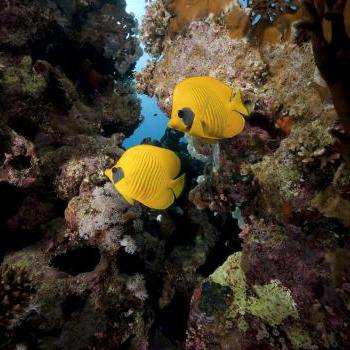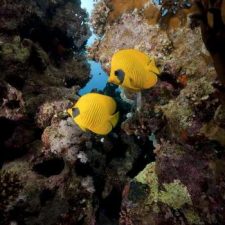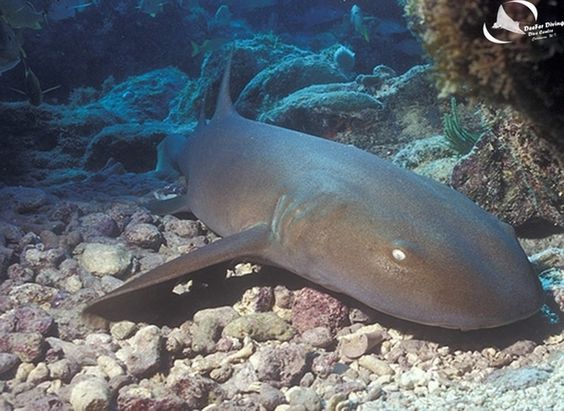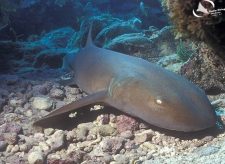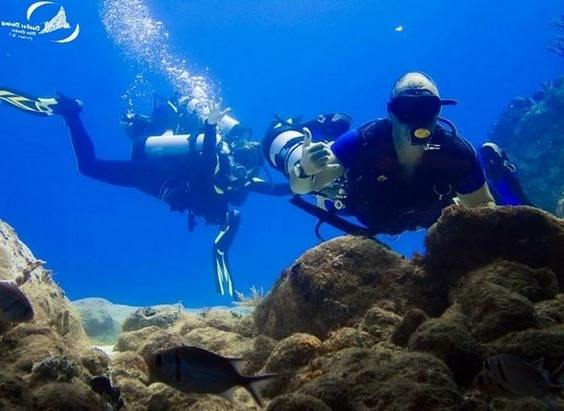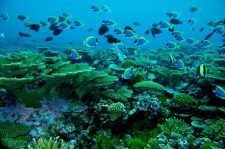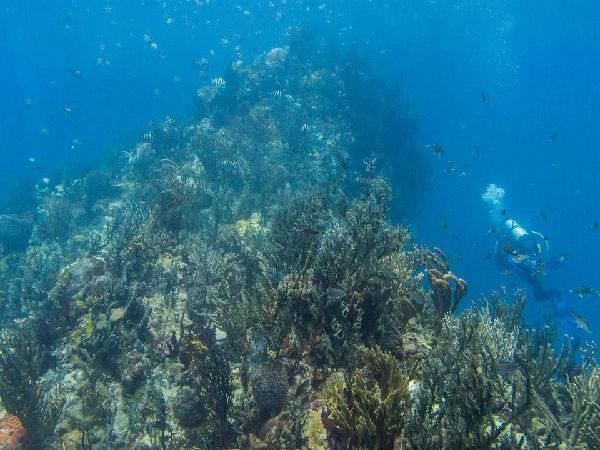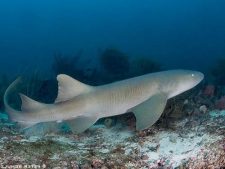Frigate Rock south of Carriacou.
- Strong currents.
- Depth between 5 and 40 meters.
- Nurse sharks, lobsters and plenty corals.
A magnificent rocky reef with its top at five meters and maximum depth at forty meters.
Frigate Rock is an exceptional site for a fun and fast paced drift.
The current is strong most of the time.
That keeps the larger pelagics coming in droves.
Watch for everything from jack to barracuda.
Look for purple and gold fairy basslets, rock beauties, and nudibranchs galore.
Along the top of the reef are beautiful fields of lettuce and elkhorn coral.
The corals host a kaleidoscope of smaller reef creatures.
Beneath the many overhangs and inside the grottoes along the wall you can find scores of lobsters.
If you’re lucky, you may even encounter napping nurse sharks.
